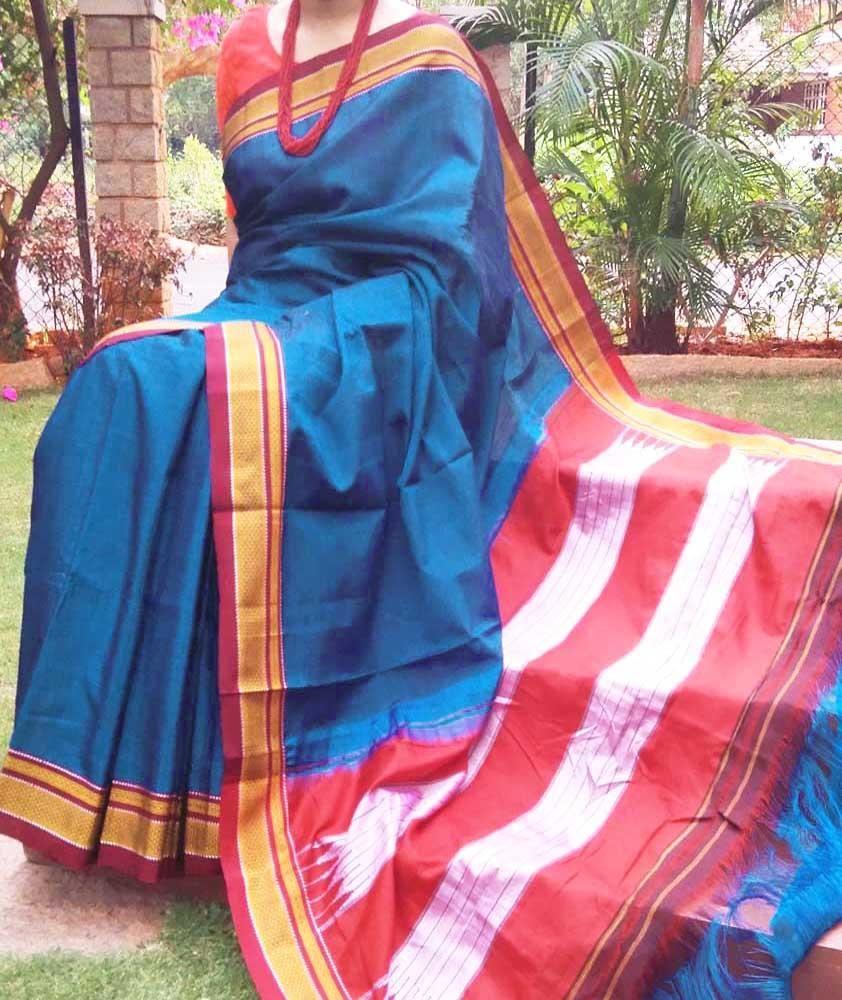A woman’s best friend is a saree.The woman looks her best in it, making it the ideal outfit for any event.Traditional sarees are a wardrobe essential for every woman.The Ilkal Saree is one of the south’s traditional sarees.Ilkal comes from the small town in Karnataka’s Bagalkot district where it is traditionally made.The saree is woven on a handloom with cotton for the weft and art silk for the wrap. Both are then joined together using the Tope Teni technique, a traditional method.Cotton for a wrap, pure silk for the weft, and silk for both the warp and the weft are other possible combinations.
Ilkal silk sarees and Ilkal cotton sarees, named after the town Ilkal in the Bagalkot district of Karnataka state, are famous for their traditional handloom attire. These traditional handwoven sarees are GI protected crafts of India.Ilkal is popular for red rock stone and customary Ilkal sarees.The locals are very friendly and speak Kannada, the state’s regional language; weaving these handwoven classic sarees is one of the area’s main sources of income.If you look around, you’ll notice that almost every household is weaving these sarees. There is no gender discrimination; both men and women weave for a living.The villages of Ilkal, Kolhar, Kamatgi, and Nidagundi in the district of Bijapur are the main centers of weaving, and many of them have their own home looms.
Let us look at the Features of Ilkal Saree
The Ilkal sari stands out from the rest thanks to the following distinctive characteristics:
- The traditional Tope Teni method is used to join the saree’s body wrap and pallu wrap.
- The pallu portion, which is also referred to as “TOPE TENI SARAGU,” is divided into three solid sections, one of which is red and the other two are white and feature the traditional temple design.
- This TOPE TENI SARAGU, which is regarded as the state symbol and is regarded as beneficial for any religious event, is considered to be auspicious.
- The color red or maroon dominates the border of an ilkal saree.
What method is used to make an Ilkal Saree?
The saree’s unique feature is the TOPE TONI technique, which is only used at Ilkal and consists of joining the body warp and the pallu warp.
A warp must be made for each Ilkal saree if it is required by anyone.Body warp threads are made separately.
Similar to pallu warp, it is prepared separately using pure silk or art silk, depending on the desired quality.
Thirdly, the border portion of the warp is made the same way as the pallu warp.
It can be made of art silk or pure silk, and the color that is used for the pallu and the border will be the same color.
The pallu’s length will typically range from 16 to 27 inches.
The loop technique, also known locally as TOPE TENI, is used to join the body and pallu threads.
How to tell an authentic Ilkal Saree apart?
The TOP TENI technique, which is used locally to join the body warp and pallu warp using a series of loops, gives the saree its singularity.
The weft is applied using the KONDI technique by inserting three shuttles for the body and border.
The saree’s border is very wide, measuring 4 to 6 inches.
The border design is typically divided into three categories: Gomi, Paraspet, and Gaadi.Body covered in squares, rectangles, and stripes

